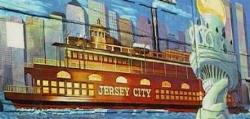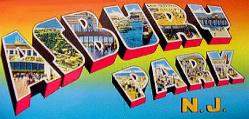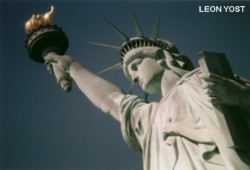 |  |  |
|
| ||
 |  |  |
 |  |  |
|
| ||
 |  |  |
|
|
They were called by the western nations Wapenachki, -- "People of the Rising of the Sun." The name Delaware was given to them and one of their rivers, after Lord de la Ware, which, they at first resented but accepted it after being told that he was a great "Brave." 'In character they were a noble spirited but gentle, kindly people, and all the early writers concur in testimony to their hospitality. Each family lived in its separate wigwam, a wattled hut with rounded top, thatched with mats woven of corn leaves, sweet flag, or bark of trees. These were built in groups and usually surrounded with palisades of small tree trunks firmly planted in the ground, sometimes two or, three rows, interlaced, and from twenty to thirty feet in height. Their clothing was made of deer skin, soft and pliable and beautifully embroidered with wampum beads or dyed porcupine quills. In some of the arts they had attained great skill, excelling in dressing deerskins and in feather work; carved stone, made ornaments of shell and a rude pottery, some in the shape of animals.
They recognized the value of the Trenton clays. and Indian potters used them for centuries before the white men came. While their weapons and utensils were principally of stone, they also used copper, both native New Jersey ore and that brought from Lake Superior, which they deftly hammered into shape. Old mining holes and Indian tools have been found between Elizabethtown and New York. Bowls were carved from wood and from soap-stone, 'kettles were made of the latter which would-hold from ten to twelve gallons. They used both vegetable and mineral paints and dyes ; were very expert fishermen and hunters.
They were accurate in computing time and had some - astronomical knowledge; women and children could give names to many of the stars, and their year began with the first moon after' the February moon. The time for planting was calculated by the rising of Taurus in a certain quarter. To this constellation they gave the name of a mythical great horned beast. They had a word for year, and counted their ages and sequence of events by yearly periods, but recognized only twelve moons in the-year. They kept a record of the years by adding a black bead of wampum for each year in a belt kept for the purpose. Their picture writing was scratched on stones or cut or painted on bark or wood. It was a record of current events, the past history of the nation, and in memory of famous men, events, and actions of note. They also recorded abstract ideas, as, when an Indian gave William Penn a drawing of the "Great Man." within a series of concentric circles as their idea of God. These picture writings were understood and could be read by the various branches of the Algonkin stock. Bunches of slender sticks notched or painted were also used as records.
In religion, they worshipped Light and its representatives, the Sun, Fire -- "a special messenger, to the Sun" the Four Winds -- "Bringers Of rain and sunshine" and Totemic Animals. "Light was the body or fountain of Deity," something "All Light, a Being in whom the earth and all things in it may be seen; a Great Man clothed with the day, yea, with the brightest day, a day of many years, yea, a day of everlasting continuance. From Him proceeded, in Him were, to Him returned all things, and the souls of all things." This was their faith taught by their Priests, called "Powow," meaning dreamer. They interpreted dreams and claimed to have visions which foretold future events. They believed in reincarnation and that the pure in heart might recall former lives. There were traces of the survival of Serpent worship among the people of this locality. Cast-off serpent skins were believed to have wonderful curative properties and supplications were offered to them. In 1683 Penn said there were ten divisions of the Lenape, numbering about six thousand souls, but they soon began to decrease from disease, massacres and migrations. The New Jersey Indians rapidly died out, Peter Kalm. said, "Smallpox had destroyed increditable numbers, but brandy had killed most of the Indians."
|
|
|
|
 Your Ancestors' Story |
 Bruce Springsteen's Jersey Shore Rock Haven! |

|
UrbanTimes.com |